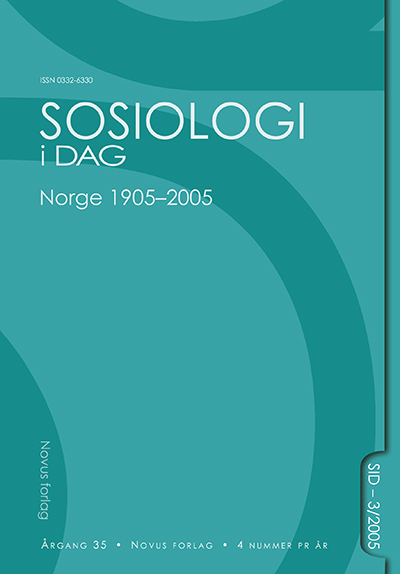Abstract
Abstract
The purpose of this essay is to analyse Norway's celebration/commemoration of the hundredth anniversary of the dissolution of the union with Sweden. Recent data from the documentation project "Dokumentasjon 2005" until summer 2005 is taken as the point of departure. The hundredth anniversary is understood within the context of a broader "wave of jubilee celebrations" found in both Europe and the US in the last decades. The Norwegian 2005 anniversary is discussed on basically two theoretical perspectives: - Anniversaries seen as culture of memory and politics of memory, where interpretations of the future become arguments in currently political messages. - Anniversaries seen as public events, where the symbolic and ritual dimensions in the celebrations are given special attention. The essay includes a comparison between the Norwegian centennial anniversary and the Danish anniversaries of the constitution in 1949 and 1999. The authors conclude that, so far, the hundredth anniversary has been marked by the following characteristics: - a pluralistic, syncretistic culture of jubilees that is characterised by a rich and heterogenic display of activities, but also a blurred profile and poor economic management, - a tension between celebration and debate/criticism in the official anni-versary program, - that actual and relevant political conflicts (Norwegian relations with the EU) are made a taboo in order to make the anniversary an event that unites people, causes a political vacuum where the EU resistence movement may use the opportunity to demonstrate their resistance to new unions.
Keywords: celebration, symbolic, public event, anniversaries
Authors who publish with this journal agree to the following terms:
Â
- Authors retain copyright and grant the journal right of first publication, with the work 1 year after publication simultaneously licensed under a Creative Commons Attribution License that allows others to share the work with an acknowledgement of the work's authorship and initial publication in this journal.
- Authors are able to enter into separate, additional contractual arrangements for the non-exclusive distribution of the journal's published version of the work (e.g., post it to an institutional repository or publish it in a book), with an acknowledgement of its initial publication in this journal.
